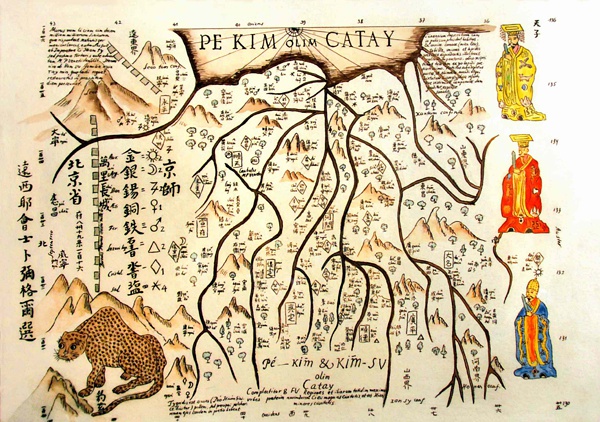The spread of Chinese in the Ming and Qing dynasties

This colored map of Beijing in the Ming Dynasty was designed by Michal Boym, a Polish Sinologist. Boym came to China as a missionary at first, and then he helped to introduce Chinese medicine, phytology and geography to European countries.
The Ming and Qing dynasties hold valuable lessons for examining the spread of Chinese languages. There were big disparities in the ways in which Japan, Korea and countries in both Europe and America received and learned Chinese languages.
During the Edo period, Confucianism became Japan’s official orthodox thought. From that point on, Confucian education extended its range from the education of bureaucrats to the education of all aristocrats and the masses. Even today, Chinese Confucianism and classical literary works are still compulsory textbooks for Japanese high school students.
In the Meiji period, Japanese teachers of public and private schools, diplomats, and staff of Chinese-teaching organizations became the main communicators of Chinese language. They not only compiled Chinese teaching materials, but also wrote monographs on Chinese grammar. These teaching materials represented the fact that at that time, these pioneers of language education actively took part in the teaching and studies of Chinese as a second language in Japan.
From the late Yuan Dynasty to the Ming and Qing dynasties, there were various versions of textbooks on oral Chinese in Korea. These textbooks reveal that Korea ceaselessly studied northern Chinese dialects across four centuries. The spread of Chinese language in Korea has been promoted by the authorities and finally exerted an influence on private commercial activities. The official interpreters were the main body of learning Chinese.
In the 16th century, a group of educated Western missionaries came to China to preach their religion. The first difficulty they met in China was language. Chinese characters have complex strokes, and there is a big difference between the oral and written uses of language. Because the pronunciation and characters of Chinese are separated, these missionaries needed to learn speaking, reading and writing. Missionaries first arrived in Guangdong and Fujian provinces, and the complicated local dialects made it harder to learn Chinese. So they utilized Western letters to add pronunciation to Chinese characters, and used Latin grammar to analyze Chinese vocabulary and grammatical structures.
Their efforts and achievements were compiled into books or teaching materials, and works relating to linguistics were released. Although the spread of Chinese language was merely part of missionaries’ work and a byproduct of their attempts to spread religion, their works on the Chinese language became popular in Europe. Many Western scholars decided to study Chinese language and culture, promoting the birth of a new discipline, Sinology, and the spread of Chinese culture in the West. When these missionaries returned to their homeland, they became an early group of Sinologists and contributed to cultural studies.
Zhang Meilan is a professor from the School of Humanities at Tsinghua University.
